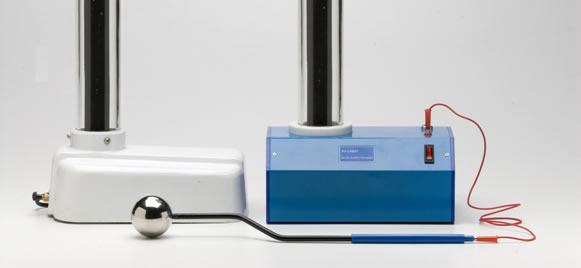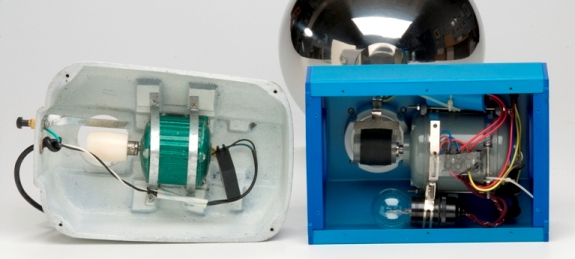
1. Does the Van De Graaf Generator come with a discharge wand? A discharge wand is used as a grounding mechanism for the device to discharge the static electricity generated by the dome. Many stores charge extra for the discharge wand, so be careful not to fall for this simple price ploy.
2. What potential (KV) should I look for? A minimum potential of 200,000 Volts is required for hair raising demonstrations.
3. Is the Van De Graaf Generator fused? The belts break when they are improperly adjusted or worn out. When the belt breaks, the motor often is jammed by the broken belt. Without fuse protection, the motor can sometimes seize.
4. Does the Van De Graaf Generator have an output terminal? An output terminal is found on the dome, and allows the user to harness the output for experimentation.
5. Does the Van De Graaf Generator have a humidity control mechanism? High humidity is the environmental condition that can rob the Van De Graaf Generator of much of its output. Humidity control is typically achieved in a Van De Graaf Generator by the simple addition of a small (25w or less) light bulb in the base of the unit. The heat generated by the bulb is enough to dissipate humidity in the belt chamber and dome.
6. Fit and Finish. Very simply put, quality construction can add years to the life span of these devices.
Ok, now that we've covered the basics, let's compare these devices visually.

As you can see from the photograph above, these two Van De Graaf Generators appear to be much the same from outward appearances.

Closer inspection from underneath reveals the rather large differences between these two generators. Note the motor size, which allows the generator on the right to operate at 50% greater RPMs. Also note the humidity control bulb, and the fused wiring harness. Fuse access is conveniently located on the top rear of the device, and allows the user to replace the fuse in seconds.